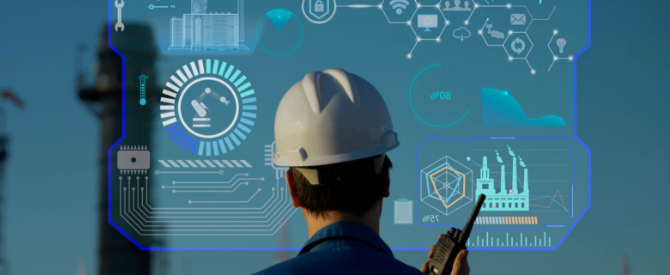IoT 101 – What is the internet of things and what can it do for your business?
Have you ever heard of smart homes, smart TVs, smart alarms, smart watches, or just smart devices in general? Without the Internet of Things, or IoT for short, these devices and ‘things’ wouldn’t be ‘smart’ – they would just be regular devices. What IoT does is enables these devices to be part of a connected ecosystem where the data they collect is easily shared and analysed in order to gain unique insights into an array of different aspects.
In essence, the Internet of Things is a collection of physical objects linked through a far-reaching network. It is a system of interrelated devices that are connected to the internet to transfer and receive data from one to the other. This data is then stored, extrapolated, and harnessed to provide homeowners, business owners and essentially anyone, with better insights into how ‘things’ work around us.
But how does this all work, and what does it mean?
Firstly, in order to collect this data, you are going to need devices. These devices can come in two forms – general devices and sensing devices (sensors). A classic example of general IoT devices would be some of the appliances in your home like smart TVs, smart alarm clocks, smart espresso machines, and more. Sensing devices, on the other hand, can help measure things like humidity, light intensity, O2 levels, and other parameters. These IoT devices (general devices and sensors) are connected to the internet with the help of gateways – which allow data to be passed from the devices and stored in a Cloud. The Cloud acts as both a storage and processing unit, where actions are performed on the collected data through acquiring unique insights from the findings. In order for this data to be shared from the sensors and devices, to the gateways, to the cloud environment – they need to be connected to a ubiquitous connectivity solution.
A live example
Here is a great example of the Internet of Things in action. Let’s just say you are a farm owner with a large piece of land. On this land, you grow crops that require periodic watering. For this reason, you have installed an irrigation system. The problem is that you don’t need to water your crops every day, and you don’t have the time to do it manually because your land is too large and you have other responsibilities to take care of throughout the day. With the Internet of Things, you can easily automate this process, and even specify when you want your irrigation system to operate – say for instance when the moisture level in your soil drops. The IoT sensors you have installed in the area gauge the soil moisture levels. This information is sent to an IoT gateway, which then aggerates the data and sends it on to the Cloud through a far-reaching connectivity solution. Once the moisture level drops your irrigation system will be automatically triggered, allowing your crops to be watered while you are out doing other important activities. Information stored in the Cloud can then be extrapolated by software and sent to your smartphone (for example), detailing exactly when the irrigation system went off, how many litres were required to sate the crops, how many times it happened this week compared to last week (and much, much more). This will allow you to formulate a strategy that will make the entire process easier to manage and provide you with far more efficient utilisation of resources – resulting in better crops yields, and ultimately higher profitability.



